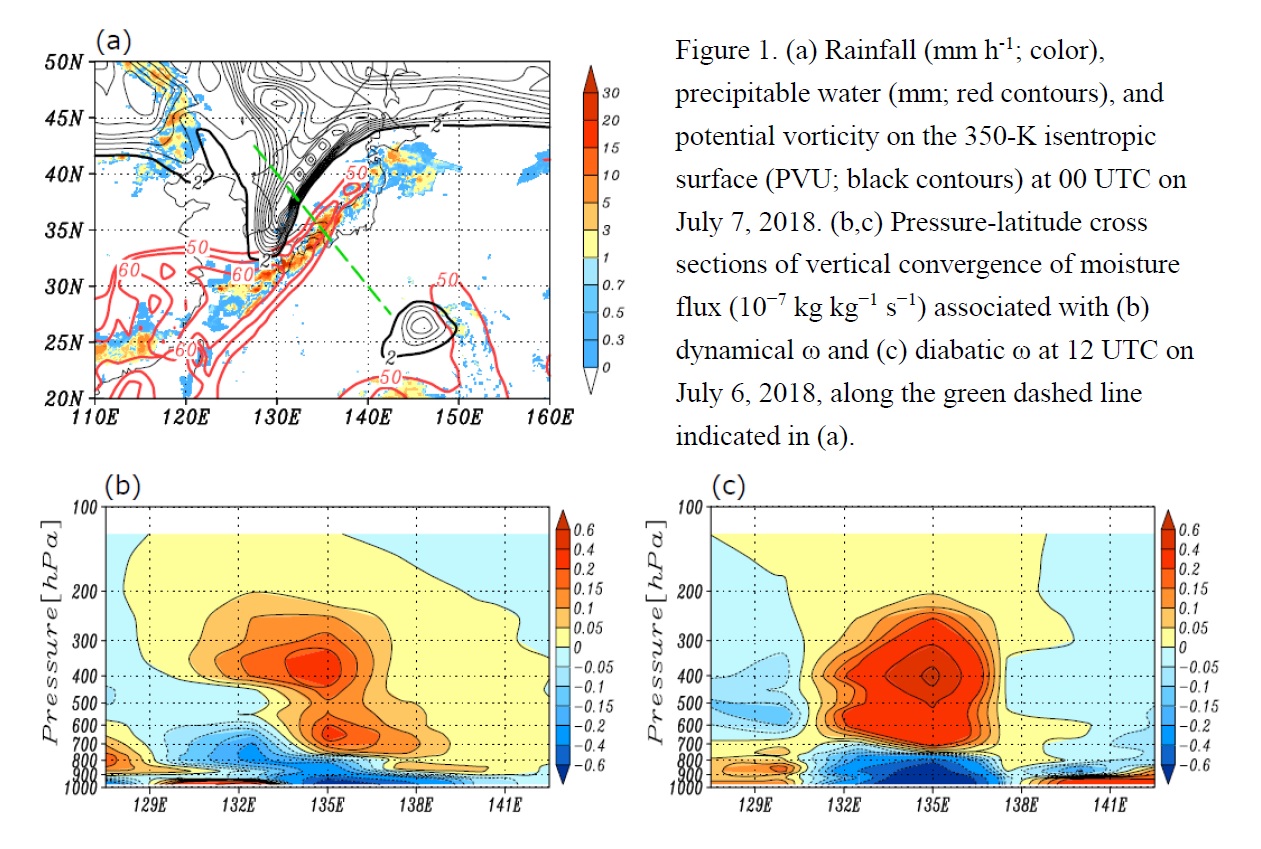Graphical Abstract
Yokoyama, C., H. Tsuji, and Y. N. Takayabu, 2020: The effects of an upper-tropospheric trough on the heavy rainfall event in July 2018 over Japan. J. Meteor. Soc. Japan, 98, 235-255.
Special Edition on Extreme Rainfall Events in 2017 and 2018
https://doi.org/10.2151/jmsj.2020-013
Graphical Abstract
Plain Language Summary: Heavy rainfall occurred over a broad portion of western Japan on July 5–8, 2018. We found that the heavy rainfall was brought by a well-organized rainfall system, which was maintained under relatively stable and very humid conditions compared with the climatology. An upper-tropospheric trough, which lingered around the Korean Peninsula, played an important role in producing the humid stratification. By examining dynamical ascent associated with the trough and diabatic ascent separately, we found that dynamical ascent helped to moisten a relatively deep layer of the mid- to lower troposphere in conjunction with southerly horizontal moisture flux.
Highlights:
- The heavy rainfall, which occurred across an extensive area of Japan on July 5–8, 2018, was brought by a well-organized rainfall system with both intense convective rainfall and a large area of stratiform rainfall.
- The large-scale environments related to the event were relatively stable and very humid throughout most of the troposphere compared with the climatology.
- Dynamical ascent associated with an upper-tropospheric trough helped to maintain an environment favorable for rainfall organization thorough the moistening of the mid-troposphere.







